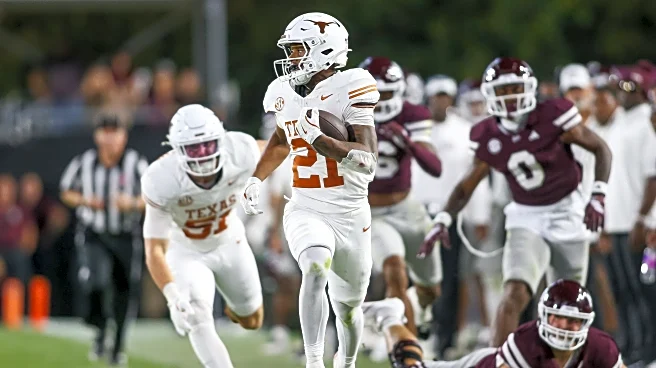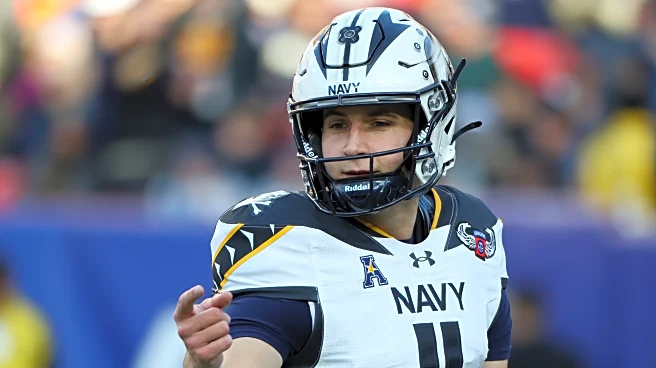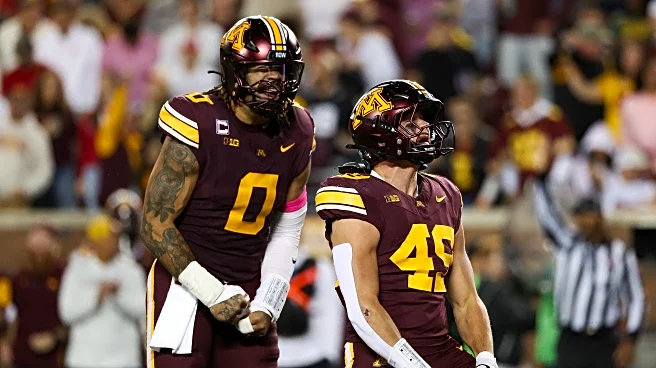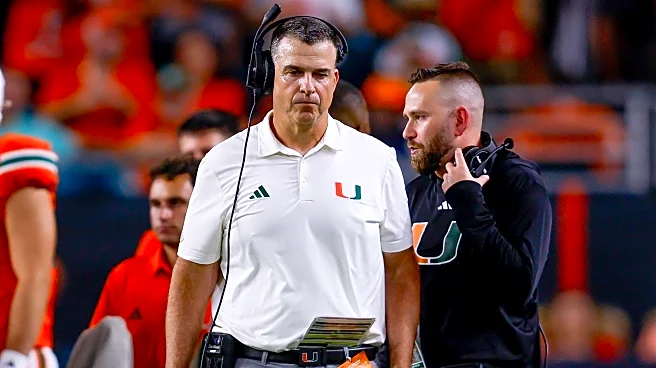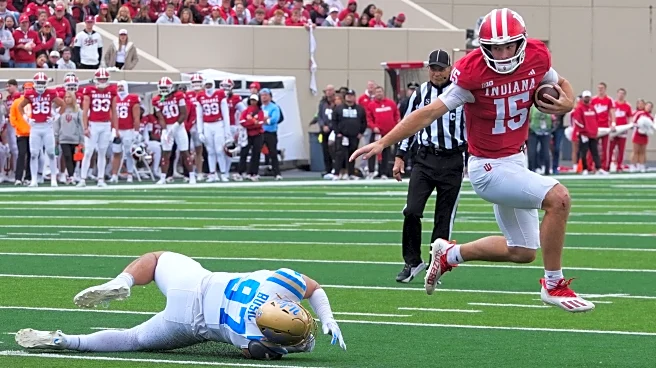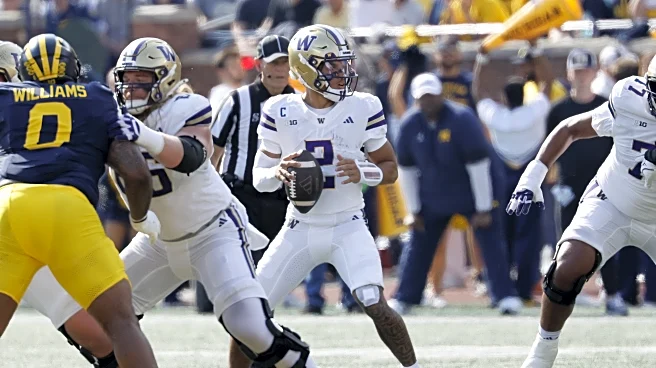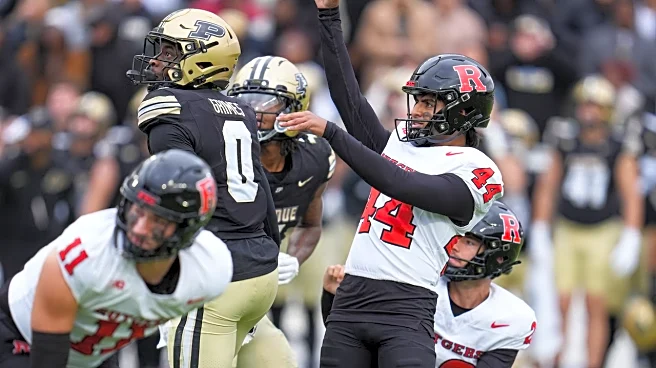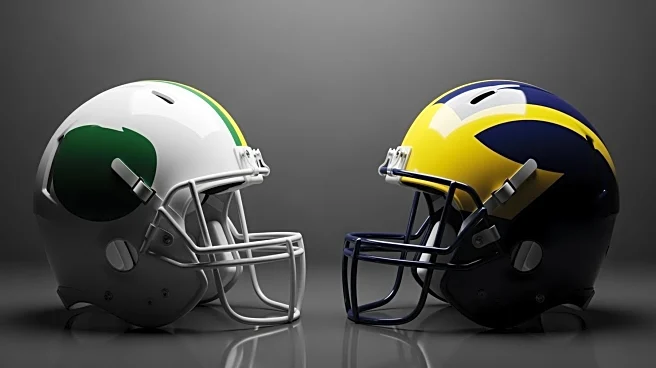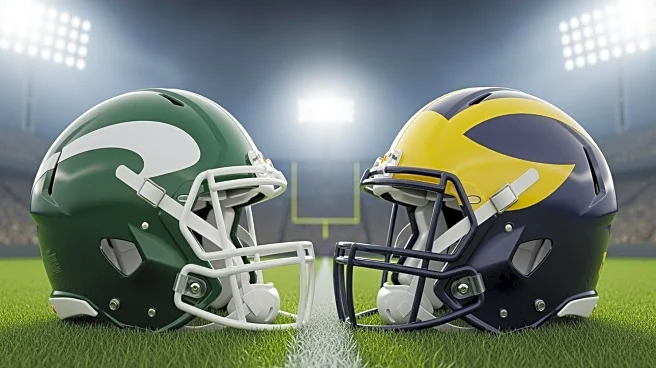What's Happening?
The Navy Midshipmen secured a victory against the Florida Atlantic Owls with a score of 42-32 in a recent football game held in Annapolis, Maryland. Navy's Blake Horvath was a standout performer, rushing
for four touchdowns and contributing significantly to the team's success. The Midshipmen extended their winning streak to ten games, tying a program record last achieved in 1959-60. Navy's defense also played a crucial role, with Coleman Cauley forcing two turnovers that led to scoring opportunities. Florida Atlantic, despite a strong performance from quarterback Caden Veltkamp, who threw for 299 yards and two touchdowns, struggled to keep pace with Navy's offensive prowess.
Why It's Important?
This victory is significant for Navy as it maintains their undefeated record in the American Athletic Conference, boosting their chances for a top spot in the league. The win also highlights Navy's effective ground game strategy, which could be pivotal in upcoming matches. For Florida Atlantic, the loss underscores challenges in their rushing game, which managed only 69 yards, indicating areas for improvement. The outcome of this game could influence the standings and playoff prospects for both teams, impacting their strategies and preparations for future games.
What's Next?
Navy will aim to continue their winning streak in upcoming games, potentially setting a new program record if they secure another victory. Florida Atlantic will need to reassess their strategies, particularly in their rushing game, to improve their performance in future matches. Both teams will likely focus on refining their tactics and addressing weaknesses as they prepare for the remainder of the season.
Beyond the Headlines
The game highlights the importance of strategic turnovers and effective rushing in football, showcasing how these elements can decisively influence the outcome of a match. Navy's ability to capitalize on Florida Atlantic's mistakes demonstrates the critical role of defense in complementing offensive efforts. This match also reflects broader trends in college football, where teams with strong defensive and rushing capabilities often outperform those relying heavily on passing.


